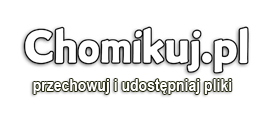Download: Serbo-Croatian.pdf
Serbo-Croatian
Author: Snjezana Kordic
Publisher: Lincom Europa
File: 26.7MB pdf
The language which in linguistic literature is most commonly called Serbo-Croatian belongs to the Southern branch of the Slavonic group of the Indo-European language family. It is spoken by approx. 16 million people in the four of the six republics of the former Yugoslavia (the Štokavian dialect was the basis for language standardization): Croatia, Serbia, Montenegro, Bosnia-Hercegovina. Since Yugoslavia has disintegrated, each of the three countries which emerged from the four republics now calls this language according to its national name: Croatian, Serbian, Bosnian. It is also spoken by the expatriates, particularly in West Europa, and certain cities in North and South America and Australia.
Serbo-Croatian has all the most important typological characteristics of the Slavonic languages, that is a rich inflectional morphology, an extensive agreement system, so-called free word order, a rich set of morphophonemic alternations, the pervasive aspectual opposition, a double negation, a reflexive possessive and so on.
Some of the interesting specifics of Serbo-Croatian are: 1) four accents with pitch and length involved (only Slovene among Slavonic languages has a somewhat similar system of accents); 2) it is the only Slavonic language that has preserved a three-member system of deixis according to degrees of distance and with the same consonant alternation v/t/n by demonstrative pronouns, adverbs and even by so-called presentatives; 3) in place of an infinitive in certain constructions where its understood subject can be retrieved from the syntactic context, Serbo-Croatian (especially in the eastern region) often uses a subordinate clause consisting of the subordinator da and a present-tense verb form - this phenomenon is typical to the area of Balkan languages (Bulgarian and Macedonian have the same construction).
The present volume begins with a section on phonology (vowels, consonants, accents). This is followed by a description of morphology (nominal: nouns, adjectives, pronouns, numerals; verbal morphology). The syntax is presented in the third section, in which noun phrase, clause structure, coordination, subordination (especially relatives), negation, word order and discourse related phenomena are described. The volume also contains a sample text with interlinear transcription and translation and an ample bibliography.



 Pobierz
Pobierz